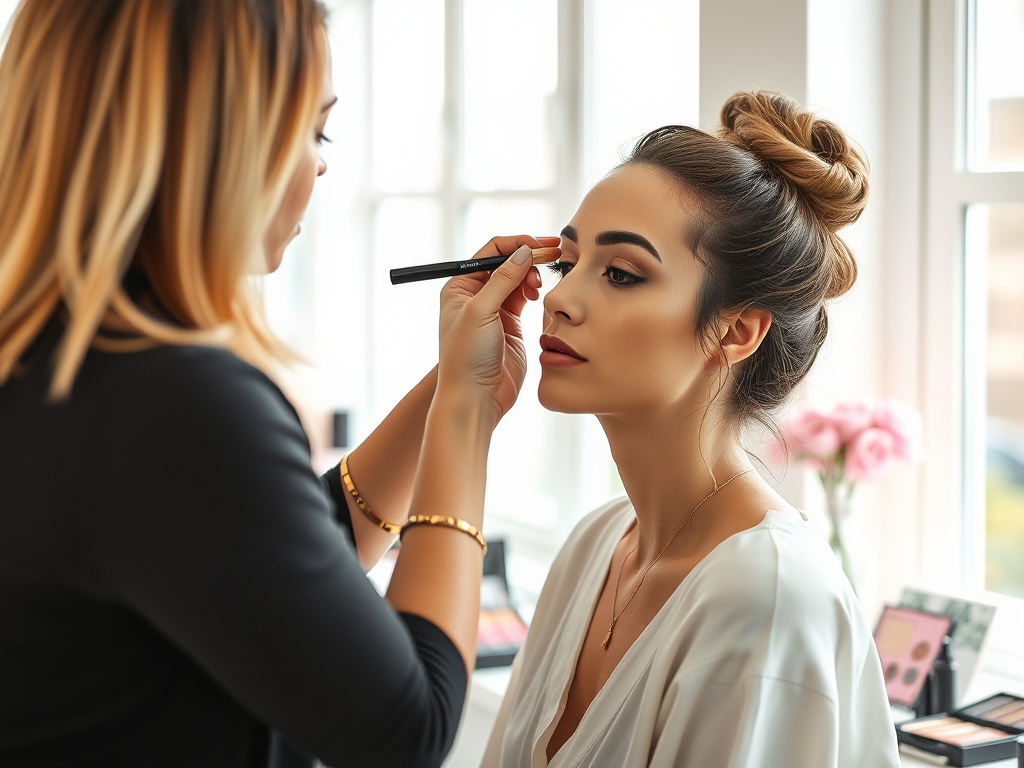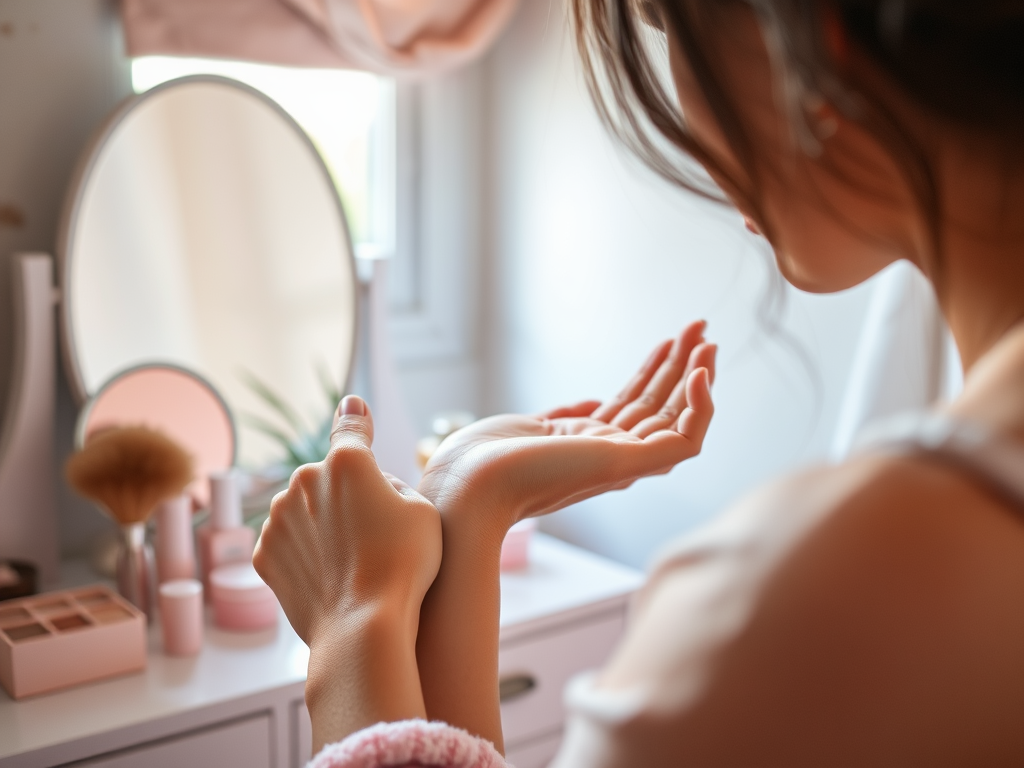The realm of hair coloring is vibrant and diverse, with techniques that can transform your look in subtle or dramatic ways. Among these methods, highlights and lowlights stand out as popular choices for adding depth, dimension, and interest to one’s hair. But what exactly sets these two techniques apart? Highlights are sections of hair that have been lightened to be a few shades brighter than your base color, creating a sun-kissed or vibrant effect, while lowlights involve darkening strands to add richness and volume. The main topic of this article is to demystify these two hair coloring techniques, helping you to understand their differences and decide which might be the best option for your next salon visit.
Understanding Highlights
Highlights are like the brushstrokes of luminance in the canvas of your hair. They are created by lightening selected strands, which can be as minimal as a few tendrils or as abundant as chunky sections. The goal is to mimic the natural lightening that occurs from sun exposure or to create a bold contrast for a more statement look.
Types of Highlights
Choosing to add highlights to your hair is an exciting decision and is ideal for various scenarios:
- When you want to brighten your face and add dimension to your hair.
- For trying out lighter shades without committing to a full-head color.
- If you wish to prepare your hair for a future lighter color transition.
Highlights are a versatile option that can be tailored to suit different preferences and can be as natural or as bold as desired.

Exploring Lowlights
Lowlights could be considered the shadow to highlights’ light. Where highlights lift the shade, lowlights add darker tones to your hair, providing depth and movement. This can be particularly effective for adding the illusion of volume to thin hair or enhancing the complexity of your hair color with a sultry undertone.
When to Opt for Lowlights
Lowlights are a great choice when you want to:
- Return depth to over-lightened or monochromatic blonde hair.
- Create a richer, more dynamic look in your natural hair color.
- Achieve a warmer color outcome during the colder months.
| Technique | Description | Best For |
|---|---|---|
| Foil Highlights | Precise, uniform lightening; strands are isolated in foils. | Maintaining clear, even brightness throughout. |
| Balayage Highlights | Freehand painting for a natural, blended effect. | Subtle, natural lightening with less maintenance. |
| Reverse Balayage | Darkening hair at the roots blending to lighter ends. | Adding depth while keeping ends bright. |
| Shadow Lowlights | Darker tones under the top layer of hair, for depth. | Creating volume and richness under lighter top layers. |
Comparing Highlights and Lowlights
Color Contrast and Impact
The choice between highlights and lowlights can dramatically alter the impact of your hair color. Highlights tend to create a vibrant, lighter effect that can illuminate your complexion and give the appearance of added texture. Lowlights, conversely, offer a more subtle, grounding effect by infusing darker tones for a natural enhancement of your base color. When deciding between the two, consider the level of contrast you desire with your natural hair color and the kind of statement you want to make.
Techniques and Application
The methodology behind applying highlights and lowlights varies to suit their respective outcomes. Highlights can be applied using foils, caps, or freehand techniques like balayage or painting on the surface for a softer grow-out phase. Lowlights often require careful placement to avoid an artificial or blocky appearance, focusing on the undertones and lower sections of the hair for maximum impact and a seamless blend with the base color.
Maintenance and Longevity
When considering highlights or lowlights, it’s crucial to factor in maintenance and longevity. Highlights, especially blonde and lighter shades, may need more frequent touch-ups to address roots and potential brassiness. Lowlights typically allow for more time between salon visits as regrowth is less noticeable and the color tends to hold well, even with daily washing.
Suitability According to Hair Type and Color
Your natural hair type and color play a significant role in determining which technique will work best for you. Highlights can work wonders for those with lighter hair looking to add dimension, while lowlights might be ideal for brunettes who seek to enrich their natural shade. Always consult with a professional stylist to assess the health of your hair and to choose a method that complements your individual style.

Making the Choice: Highlights or Lowlights?
Making the choice between highlights and lowlights can be influenced by a variety of factors:
- Your skin tone and the natural base color of your hair can determine which technique will enhance your features more effectively.
- The season may influence your decision; for example, many opt for lighter highlights during the summer and darker lowlights in the winter months to reflect the seasonal color palette.
Brief Consultation with a Professional Stylist
Before making any decisions, it’s always advisable to consult with a professional stylist. They can provide valuable insights and personalized recommendations based on their expert analysis of your hair type, color, and condition. They can also advise you on the latest trends and how to achieve them with your particular hair characteristics.
Conclusion: Embracing Your Unique Style
In conclusion, both highlights and lowlights offer unique benefits that cater to different personal preferences and style goals. Highlights can brighten and add zing to your look, while lowlights can deepen and enrich your natural shade. Ultimately, the choice between highlights and lowlights should be influenced by your desired outcome, maintenance willingness, and the guidance of a seasoned hair professional. As with any aspect of personal style, the best choice is one that allows you to confidently express your individuality.

FAQs
- How often should I get my highlights or lowlights touched up?
Typically, highlights require touch-ups every 6-8 weeks, while lowlights can often go a bit longer, between 8-12 weeks, depending on the growth rate of your hair and the contrast with your natural color. - Do highlights or lowlights cause more damage to hair?
Both techniques involve processing the hair with chemicals, but highlights generally cause more noticeable damage, especially for darker hair that requires heavier bleaching. Lowlights often use milder color formulas and can be less damaging. - Can I have both highlights and lowlights at the same time?
Absolutely, combining highlights and lowlights can create a multidimensional and textured look, adding both light and shadow to your hair for a rich, sophisticated style. - Which is more suitable for fine hair, highlights or lowlights?
Both techniques can benefit fine hair. Highlights add visual texture and can make hair appear thicker, while lowlights add depth, making the hair appear more voluminous. - Will highlights or lowlights fade over time?
Yes, all hair coloring fades over time due to sun exposure, washing, and styling. However, using color-safe hair products can extend the life of both highlights and lowlights.



